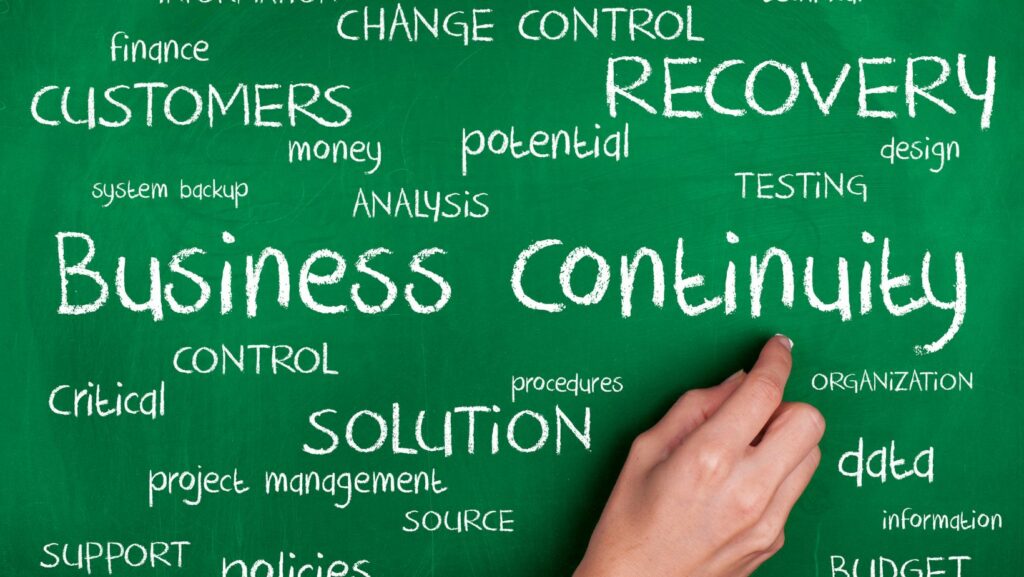In the unpredictable world of business, it’s not about if, but when a crisis will strike. That’s where a well-crafted business continuity strategy steps in. This essential tool ensures businesses stay afloat, even in the face of unexpected disruptions.
Business Continuity Strategy
As an adaptable strategy geared towards the rapid recovery and continuation of critical functions during unexpected business disruptions, a business continuity strategy encapsulates contingency techniques and logistical solutions in anticipation of crisis scenarios.
What Is Business Continuity Strategy?
 A business continuity strategy represents a comprehensive approach to managing potential risks and threats that can impact a company’s operations. Derives its strength from anticipation, this strategy pertains to measures like risk management, data protection, crisis response, and planning for unexpected obstacles.
A business continuity strategy represents a comprehensive approach to managing potential risks and threats that can impact a company’s operations. Derives its strength from anticipation, this strategy pertains to measures like risk management, data protection, crisis response, and planning for unexpected obstacles.
It’s an organization’s safety net, capturing procedures, roles, and resources essential for maintaining operations during times of crisis. Ranging from data breaches to natural disasters, these strategies cater to diverse risk scenarios.
The Importance of Business Continuity Planning
 Painting a vivid picture of survival, business continuity planning isn’t an option—it’s a necessity. This process exemplifies safeguarding mechanisms for an organization, encapsulating strategies vital for mitigating risks, minimizing loss, and ensuring swift recoveries.
Painting a vivid picture of survival, business continuity planning isn’t an option—it’s a necessity. This process exemplifies safeguarding mechanisms for an organization, encapsulating strategies vital for mitigating risks, minimizing loss, and ensuring swift recoveries.
Business continuity planning fortifies a company’s resilience, cuffing potential vulnerabilities and reinforcing capabilities to bounce back from a crisis swiftly. Moreover, it imbues patrons with confidence, exhibiting the company’s steadfast preparedness even when confronted with unexpected disruptions.
In essence, an effective business continuity plan anchors the company firmly in the stormy seas of uncertainty, ensuring that business-as-usual is quickly restored after any disruption.
Key Components of a Business Continuity Strategy
A well-oiled business continuity strategy consists of several critical components. Each of these components plays a vital role in ensuring the organization maintains its operations during a crisis and bounces back swiftly afterwards. Let’s delve deeper into these crucial elements, including risk assessment and management, Business Impact Analysis, and strategy development.
Risk Assessment and Management
The first stage involves assessing and managing potential risks that could disrupt an organization’s operational continuity. It identifies the possible threats—in moving parts such as natural disasters, cybersecurity attacks, or supply chain disruptions—facing the business, followed by comprehensive analysis and prioritization. A risk assessment phase visualizes, quantifies, and outlines hazards, allowing companies to take proactive steps and prepare appropriate responses. It’s not just about identifying what could go wrong, but taking necessary actions to prevent them, thereby ensuring the business remains unimpeded.
Business Impact Analysis
 Next, a Business Impact Analysis (BIA), expands this understanding by identifying key business processes and systems that bear the weight of potential risks. BIA explores how disruptions to different tiers or areas of the organization might impact overall operations, profitability, and reputation. It pinpoints the most vulnerable areas—measured in lost sales, excessive costs, or tarnished reputation—sans quick action post-disruption. With BIA, the most critical operational aspects receive prioritized attention and mitigation during a crisis, minimizing any potential losses.
Next, a Business Impact Analysis (BIA), expands this understanding by identifying key business processes and systems that bear the weight of potential risks. BIA explores how disruptions to different tiers or areas of the organization might impact overall operations, profitability, and reputation. It pinpoints the most vulnerable areas—measured in lost sales, excessive costs, or tarnished reputation—sans quick action post-disruption. With BIA, the most critical operational aspects receive prioritized attention and mitigation during a crisis, minimizing any potential losses.
Finally, the third critical component of an effective business continuity strategy is the development of a comprehensive action plan. This involves setting clear, achievable goals that reflect the organization’s ability to withstand or recover from disruptions. Strategy development includes establishing and training crisis management teams, developing communication procedures, and implementing disaster recovery systems. Additionally, it calls for recurring testing and refinement to ensure the strategy always aligns with changing business realities. With a robust strategy in place, businesses are well-equipped to handle unexpected situations and resume normal operations with minimal downtime.
Implementing Business Continuity Plans
A well-thought-out business continuity strategy isn’t just a nice-to-have, it’s a must for today’s businesses. It’s the difference between sinking and swimming when the unexpected hits. By identifying potential threats and taking measures to prevent disruptions, businesses can stay afloat during crises. Prioritizing critical operational aspects through Business Impact Analysis helps minimize losses, keeping the company’s heart beating even in the most challenging times. Setting achievable goals, establishing crisis management teams, and regularly testing the plan are crucial steps towards strategy development. These actions enable businesses to adapt to changing business realities and maintain operations. Let’s remember, an effective business continuity plan isn’t just about surviving a crisis.

